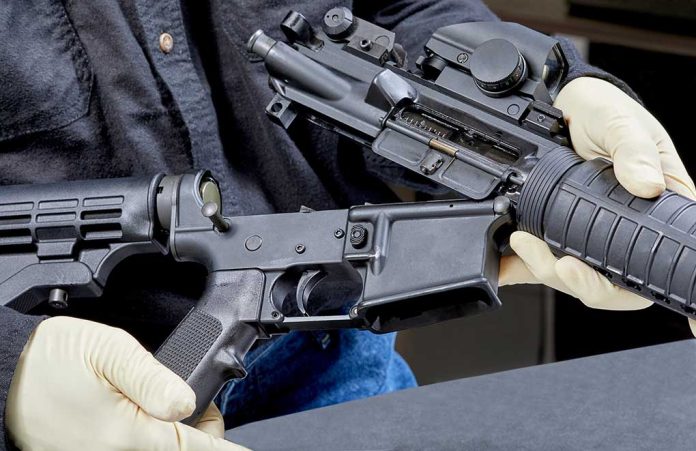
Palestinian civilians desperately seeking aid in Gaza were met with Israeli gunfire, resulting in at least 31 deaths and over 176 injuries, as President Trump’s administration faces criticism over the failed US-backed humanitarian mechanism.
Key Takeaways
- Gaza’s civil defence agency reported 31 Palestinians killed by Israeli gunfire near a US-backed aid distribution site, though Israel denies firing at civilians
- The US-backed Gaza Humanitarian Foundation (GHF) aid delivery system has been criticized by the UN and humanitarian groups for potentially serving Israeli military objectives
- Major aid organizations have refused to participate in the GHF system, calling it “surveillance-based rationing” that “legitimises a policy of deprivation by design”
- The incident occurs amid stalled ceasefire negotiations and escalating Israeli military operations in Gaza
- Gaza’s health ministry reports over 54,418 deaths since the conflict began, with most casualties being civilians
Conflicting Accounts of Deadly Aid Distribution Incident
Palestinian and Israeli authorities are providing dramatically different accounts of what occurred at the Gaza aid distribution center managed by American security contractors. According to Gaza’s civil defence spokesman Mahmud Bassal, “31 people were killed and more than 176 injured… after Israeli gunfire targeted thousands of civilians near the American aid centre in Rafah.” This stark assessment directly contradicts the Israeli military’s claim that it “did not fire at civilians while they were near or within the humanitarian aid distribution site and that reports to this effect are false.”
World Food Programme Executive Director Cindy McCain lent credibility to the Palestinian account, stating that “our people are reporting the same thing on the ground.” Medical facilities in Gaza reported treating numerous gunshot wounds, with hospitals describing scenes of “absolute carnage” as the wounded arrived. The Israeli military later modified its position, acknowledging that troops fired “warning shots” at individuals they deemed suspicious who were approaching their positions, suggesting these may have been the shots that caused casualties.
Failed US-Backed Aid Distribution System
The deadly incident highlights the catastrophic failure of the US-backed aid delivery mechanism in Gaza. After ending an 11-week blockade, Israel introduced the Gaza Humanitarian Foundation (GHF), a new aid distribution system run by American security contractors that bypasses the established UN-led humanitarian framework. This system has been plagued by chaos, with witnesses describing disorderly scenes at distribution points and no organized method for civilians to receive vital supplies.
“This new scheme is surveillance-based rationing that legitimises a policy of deprivation by design,” said Jonathan Whittall, senior UN aid official for the occupied Palestinian territory. “The UN has refused to participate in this scheme, warning that it is logistically unworkable and violates humanitarian principles by using aid as a tool in Israel’s broader efforts to depopulate areas of Gaza.”
One Palestinian at a distribution site summed up the chaos: “There’s no system or order to receive it,” said Mr. Odeh. The UN has labeled Gaza “the hungriest place on earth,” with the limited aid that has entered the territory since the blockade was eased proving woefully insufficient to address the humanitarian catastrophe. Even Steve Witkoff, the chairman of the GHF, called the deadly incident “totally unacceptable,” indicating the severity of the distribution system’s failures.
Ongoing Violence and Stalled Peace Efforts
The aid distribution tragedy occurs against the backdrop of intensifying Israeli military operations throughout Gaza. In recent days, Israeli attacks have killed at least 70 people across the territory, with 23 killed in strikes on residential buildings in the Bureij refugee camp and seven more in strikes on a kindergarten and home in Jabalia. These operations continue despite international pressure for a ceasefire, with Israel’s Defense Minister instructing the army to maintain its offensive posture regardless of ongoing negotiations.
Ceasefire talks have reached an impasse, with Hamas responding to a US-backed truce proposal with amendments that both American and Israeli officials deemed unacceptable. Qatar and Egypt have emphasized the need to overcome obstacles in the negotiations, but progress remains elusive. The health ministry in Gaza reports that over 4,149 Palestinians have died since Israel resumed its most recent offensive, bringing the war’s overall death toll to 54,418, with the majority being civilian casualties.
Humanitarian Principles Abandoned
The aid distribution situation represents a troubling departure from established humanitarian principles. UNRWA head Philippe Lazzarini has described the current aid distribution mechanism in Gaza as a “death trap” and called for safe, large-scale deliveries through traditional UN channels. Instead, the GHF system appears to many observers as an extension of Israeli military strategy rather than a genuine humanitarian effort, raising serious concerns about the politicization of aid in one of the world’s most severe humanitarian crises.
“There has been a state of alert in the emergency department as emergency services said they spent at least 30 minutes recovering casualties from the site of the strike,” reported Al Jazeera’s Tareq Abu Azzoum, describing the chaotic aftermath of violence at one aid distribution site. With civilians caught between starvation and gunfire, the humanitarian situation in Gaza continues to deteriorate while political solutions remain distant, leaving Palestinians to face impossible choices in their daily struggle for survival.









